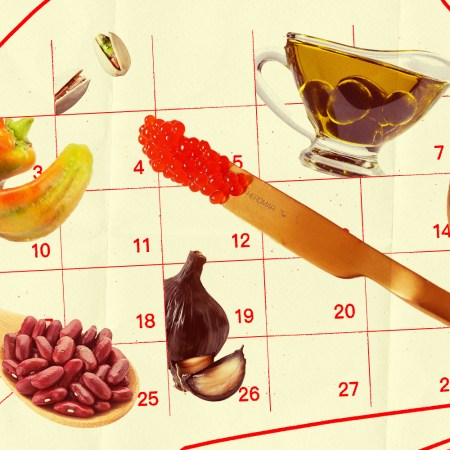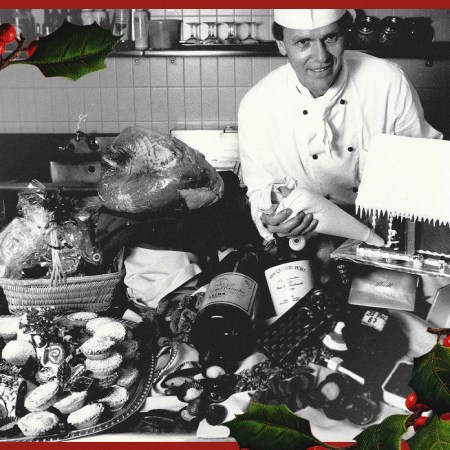It’s early in the afternoon at Bad Hunter, a lovely new restaurant in Chicago’s West Loop.
It’s green in here, and gorgeously so. Sunlight pours in through a wall of south-facing windows, and plants sprawl about the middle table that partitions the dining room. Succulents line the back bar. It is unmistakably alive, as far as rooms go.
I’m with Chef Dan Snowden, who is pontificating on the art of cooking veggies.
His menu, almost entirely devoted to vegetables, is a risky one for a city like ours. While “vegetable-forward” menus thrive in L.A. and San Francisco, here, the question remains: What kind of Chicagoan would spend their bread on vegetables when they could have beef?
“The assumption is everyone [in the Midwest] wants meat and potatoes,” says Snowden. “There’s this generalization — it may be the old guard who expects people to want that — but I think it’s selling a lot of people short. I think there’s a huge demographic that craves this type of food. The market might be too afraid to commit to it, but that’s what we’re here to do.”
Committing is one thing; executing is another.
Photo: Fry Bread
Bad Hunter serves the kind of casual, light-handed food the city’s dining scene has long been missing, and they do so without purporting themselves as a vegetarian restaurant. As in: There’s no moral crusade. No ploys for health-conscious “lifestyle” eating. Just delicious food and drink with plants at the foreground.
Selfishly, it’s also the kind of food that I’ve been missing. Meat gets old.
So what does vegetable prep look like when you’re treating it as a main rather than a side? If you’re thinking grill-style blackening, you’re not wrong, but there’s more to Snowden’s cookery than blistered tomatoes and charred kale.
Much of the cooking revolves the kitchen’s ability to slowly develop and manipulate flavors to create composed dishes that are actually craveable. There’s the starter of winter squash and lemon slices deep-fried in tempura batter and served with a balsamic hazelnut oil dipping sauce. Fry bread with housemade kefir in the dough stuffed with winter herbs. Something called butter dumplings. Get them. All the tables around you will be.
Photo: Butter Dumplings
The key here: building layers of flavor, and finding balance. But you don’t have to be a seasoned chef to achieve the same results at home. Snowden’s first piece of advice: “If it’s good to eat raw, there’s no need to cook it that hard.” Below, three simple tips you can try tonight to elevate your vegetables at home.
Brine your vegetables. “You can use any meat brine recipe, the same way you’d brine your turkey for Thanksgiving,” Snowden explains. Whether it’s mushrooms, carrots, squash or kohlrabi, brining has the same effect of pickling without the acidity: it removes the residual water but really intensities the flavors. Do remember, however, that vegetables have much less protein than a cut of meat, so don’t let them sit in the brine too long.
Alternatively, using a meat marinade has the same effect. “Take your favorite meat marinade, whether it’s a jerk chicken or bulgogi, and let your veggies sit in there an hour before cooking.” This how you’ll get the extra caramelization you’re looking for.
Think outside the salt shaker. Good food tastes food because it’s seasoned with salt, but it doesn’t have to be salt. Experiment with other forms of sodium, whether it’s soy sauce, miso or fish sauce. Or anchovies or capers. Using salt alternatives to season the vegetable provides a good backbone to create something else.
Don’t forget acidity. “Veggies are mostly water and sugar,” he says. “When you cook carrots over a grill, the reason they turn brown is the sugar is caramelizing.” You’ll want to balance that sweetness and flavor. Snowden suggests a nice vinegar or citrus juice. Or better yet, par-boil your vegetables for enhanced flavor. “For heartier veggies like carrots, we will par-boil them in a vinegar solution — vinegar, water and a little bit of salt — and blanch the vegetables til they’re not all the way cooked.” From there, cool them down, toss them in olive oil, salt and pepper, and then throw them on the grill.
Every Thursday, our resident experts see to it that you’re up to date on the latest from the world of drinks. Trend reports, bottle reviews, cocktail recipes and more. Sign up for THE SPILL now.






















